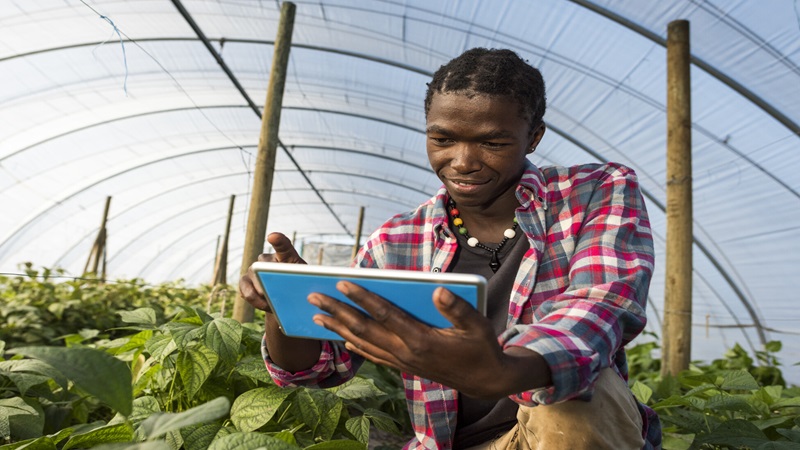
Ensuring Food Security in Africa
More than 20% of Africa’s population is undernourished. Given the rising population growth rates and poverty levels, food availability remains a critical concern in Africa.
The FAO of the United Nations (UN) defined food security at the World Food Summit in 1996 as when all people, at all times have physical and economic access to sufficient, safe and nutritious food to meet their dietary needs and food preferences for an active and healthy life. There are numerous opportunities to adjust elements of the food system to cope better with current and future climate variability.
Although these opportunities often face political, cultural, technical, and institutional barriers with deep historical roots. The stability of food systems is important on both the supply side in terms of production and the demand side in terms of being able to trade for food.
Recent estimates show that 704 million people (9.2%) worldwide were subject to severe food insecurity in 2018. The situation is most alarming in Africa, where severe food insecurity rose from 210.7 million to 277 million between 2014 and 2018, affecting 21.5% of the population 2018.
In 2018, Southern Africa had the highest prevalence of severe food insecurity (30.6%), followed by Eastern Africa (25.9%), Western Africa (17.6%), and Northern Africa (8%). Food and Agriculture Organization of the United Nations (FAO) reaffirmed this view in its first published assessment of the implications of climate change for food security, contained in its 2015 to 2030 projections for world agriculture.
Information from the latest month between February 2023 and May 2023 for which food price inflation data are available shows high inflation in most low and middle-income countries. About 78.9% of high-income countries are experiencing high food price inflation. The most affected countries are Africa, North America, Latin America, South Asia, Europe, and Central Asia. In real terms, food price inflation exceeded overall inflation in 80.1% of the 166 countries. Food insecurity is on the increase in almost every sub-region of Africa.
Challenges in Food Security
While the debate on food security continues, concerns about the implications of frequent temperature variations, rainfall variability, and increased climatic events across African countries persist. Although Africa is considered a minor player in total global greenhouse gas emissions (GHG), generating less than 4% of the world’s total the continent is susceptible to the adverse consequences of climate change variability.
The problems of global disparity and achieving food security in a highly variable climatic context are connected and cannot be solved separately. Currently, 20% of the population enjoys 85% of the world’s wealth, and the poorest 20% live on 1% of global income. Food insecurity is therefore concentrated more in sub-Saharan Africa, where 30% of the population is undernourished, and in South Asia, 23% are undernourished. It is also more prevalent at a local level in places with high poverty, such as Haiti and Afghanistan.
Climate change solutions in the African continent require the implementation of adaptation measures. Global attempts to curb climate change and its subsequent consequences have produced little benefit across Africa. Even though Africa commands approximately 60% of the world’s uncultivated arable land, the continent contributes only 10% to world food production. Given Africa’s constant struggle with hunger and famine, this raises concerns about the role of climate change in food security. However, mitigating food insecurity in Africa requires the implementation of multi-country policy strategies.
Drought is one of the most common causes of food shortages in the world. In 2011, recurrent drought caused crop failures and heavy livestock losses in parts of Eastern Africa. In 2012, there was a similar situation in the Sahel region of Western Africa. Similar drought events have also occurred in Australia, Central Europe, the Russian Federation, and the United States (California).
Prior evidence suggests that countries in Africa, especially those in sub-Saharan Africa (SSA), will experience an increase in temperature of 2 – 4°C by 2100, which is about 1.5 times higher than the expected mean increase in global temperature. A rise in temperature by 3°C or more will cause food prices to increase by 40%. A large proportion of the African population relies on rain-fed farming for their livelihood so extreme climate variability poses a significant threat to food production. Climate change and variability also raise food production costs, translating to high consumer prices.
Evidence shows that climate change could decrease agricultural output in SSA by 8% by 2080, compared with a decrease of about 4% in Asia. This negative effect of climate change will severely impair access to food, given that most economies in Africa are unable to finance food importation. A decreased income for farmers in Africa resulting from reduced agricultural output will influence most households’ capacity to buy food, even if it is available commercially.
Climate Change Adaptation to Sustain Food Security
Food security can only be ensured and enhanced with a suite of interventions across activities, ranging from production to distribution and allocation. Although it has demonstrated the importance of policy and institutional interventions for ensuring food security after a shock, the climate change impacts and adaptation community have been slow to pick up.
A similar adaptation to climate change impacts in the food system has focused on adaptive actions related to agriculture, mainly the adoption of improved technologies to accommodate the effects of changes in temperature, precipitation patterns, and length of the growing season. A broad range of actions is necessary for adaptation responses need to be stepped up, to avoid increasing food insecurity, particularly for the most vulnerable.
Conclusion
Governments, donor agencies, and development partners must pursue policies such as increasing land allocation in local land reforms, increasing food production, and investing in agricultural productivity to increase Africa’s food supply capacity.





